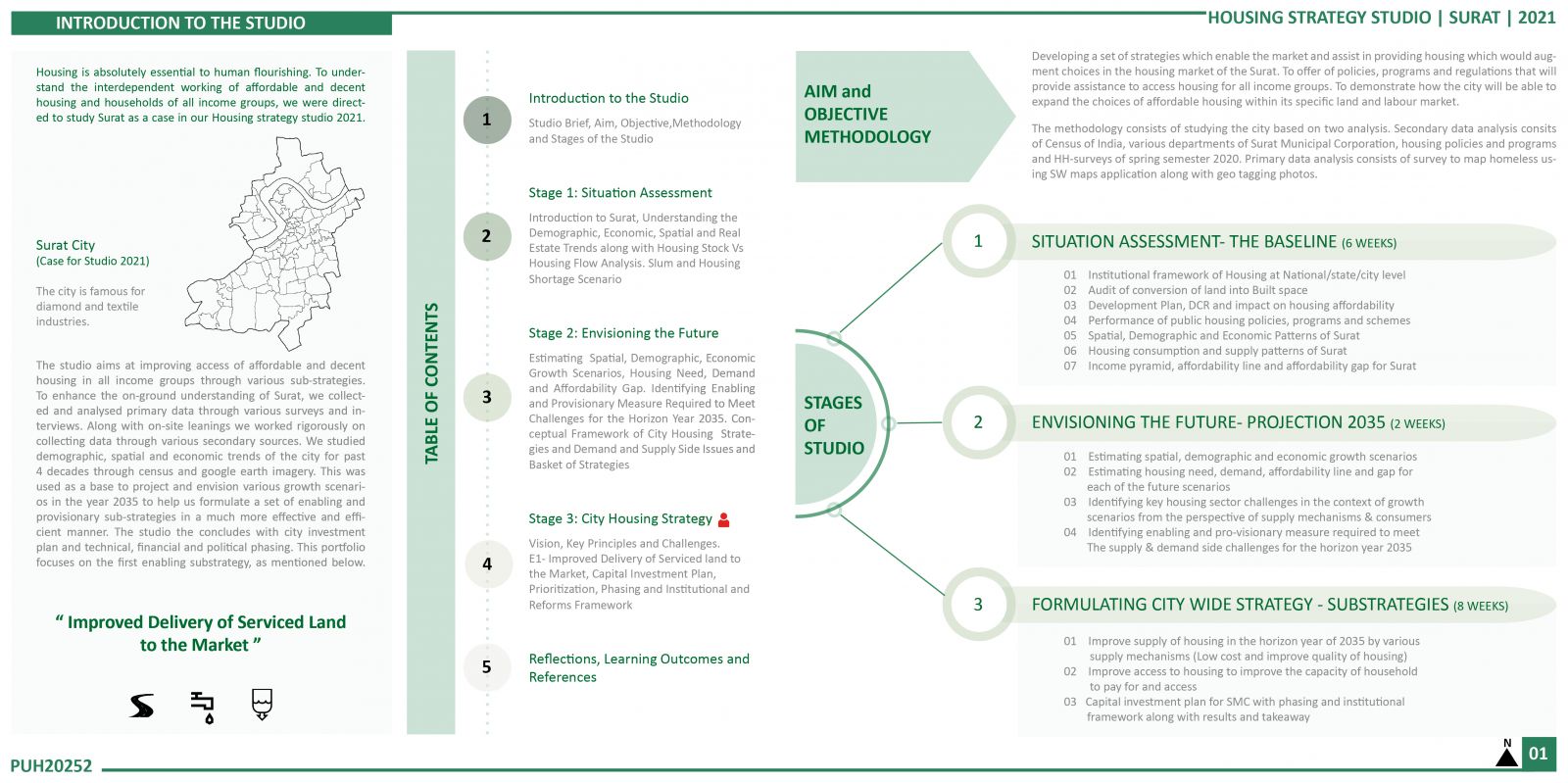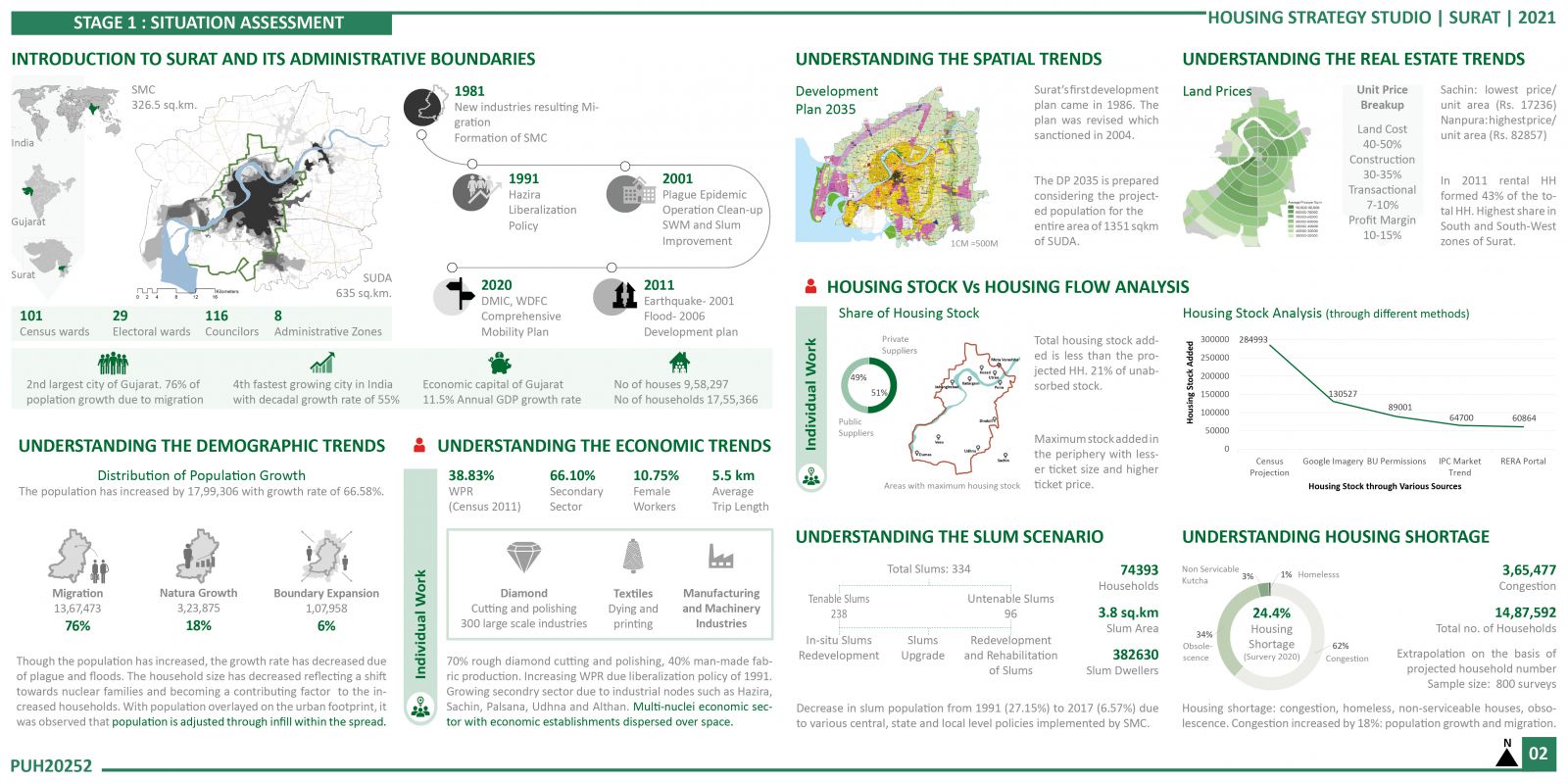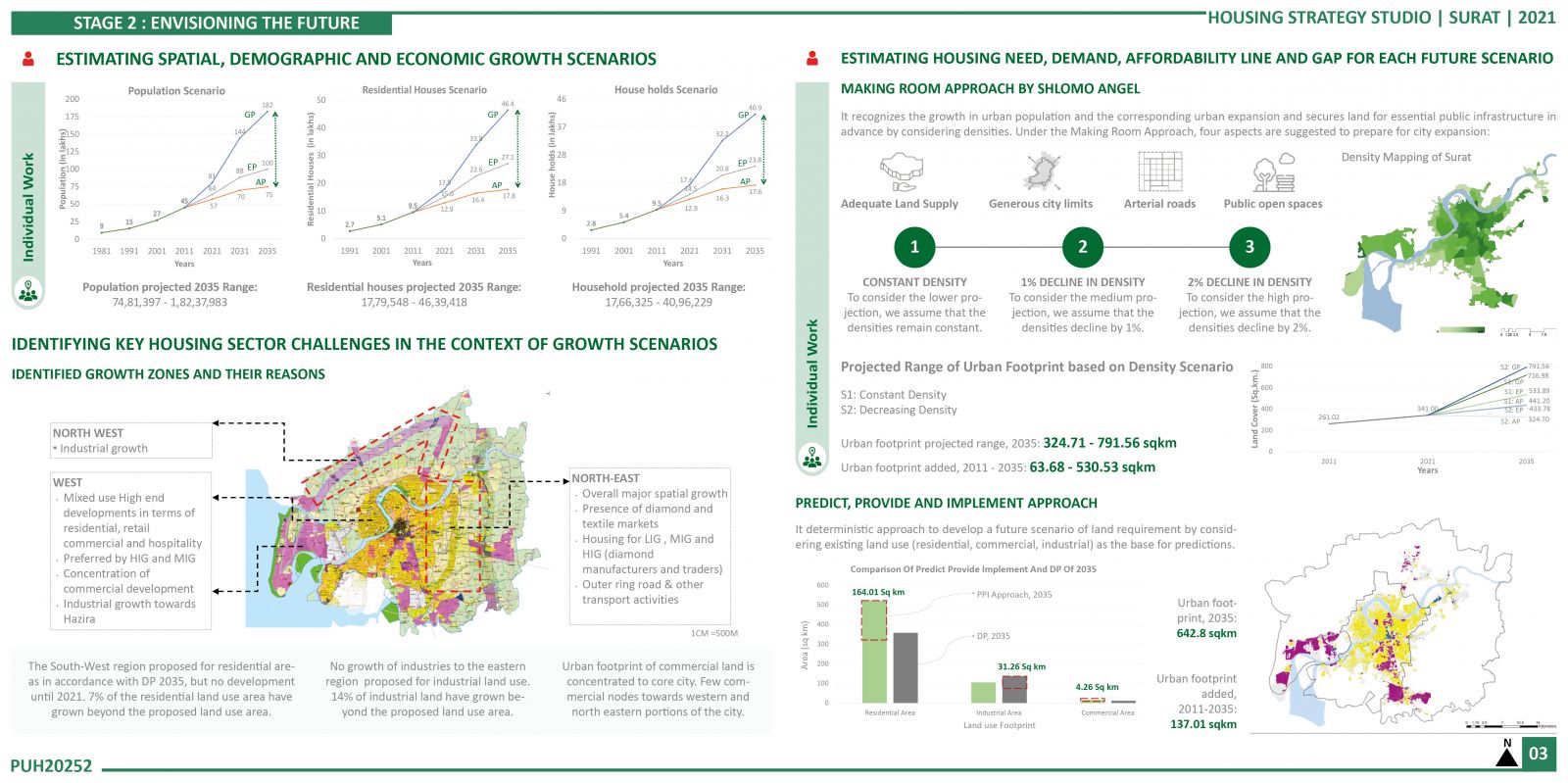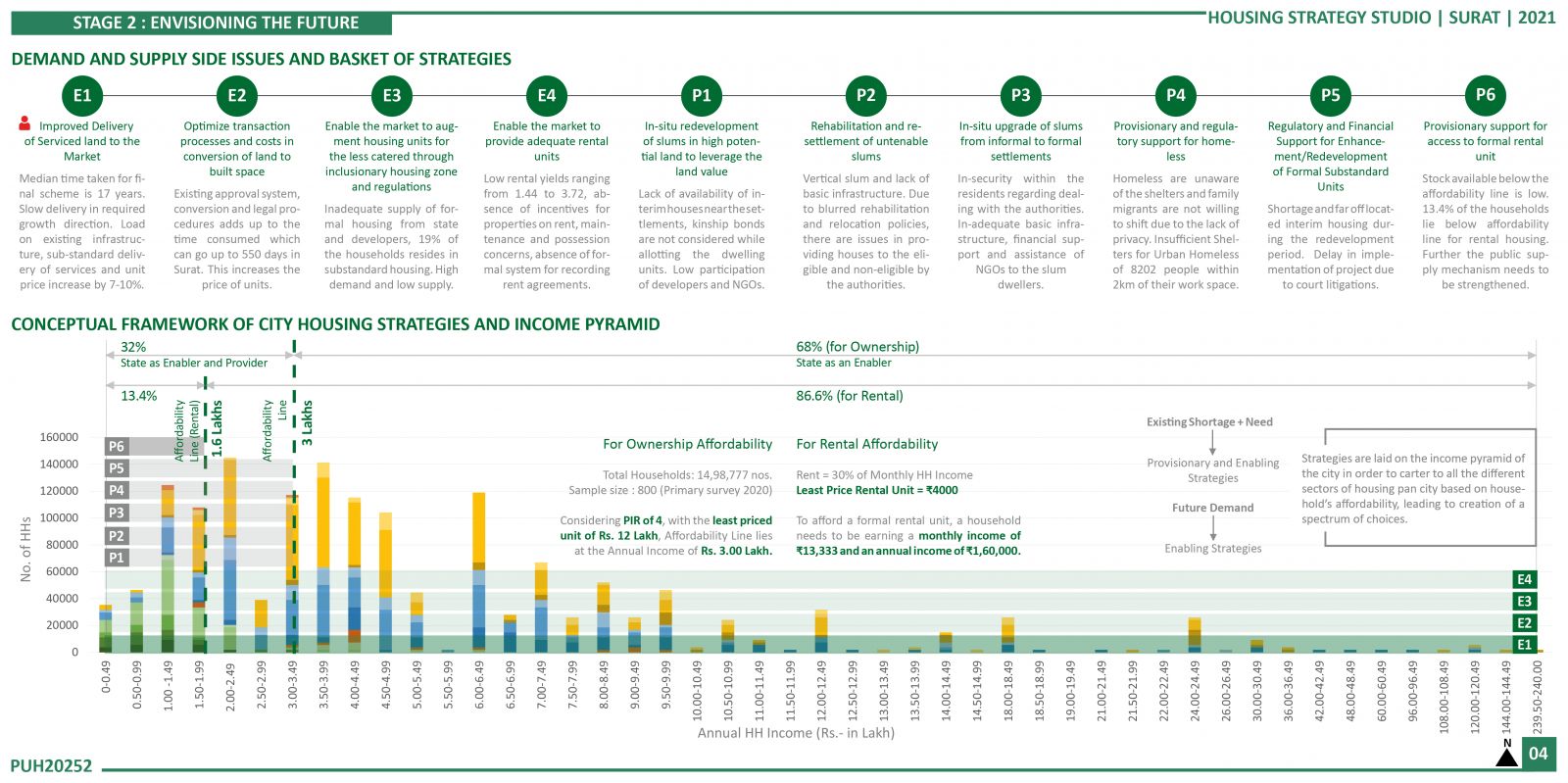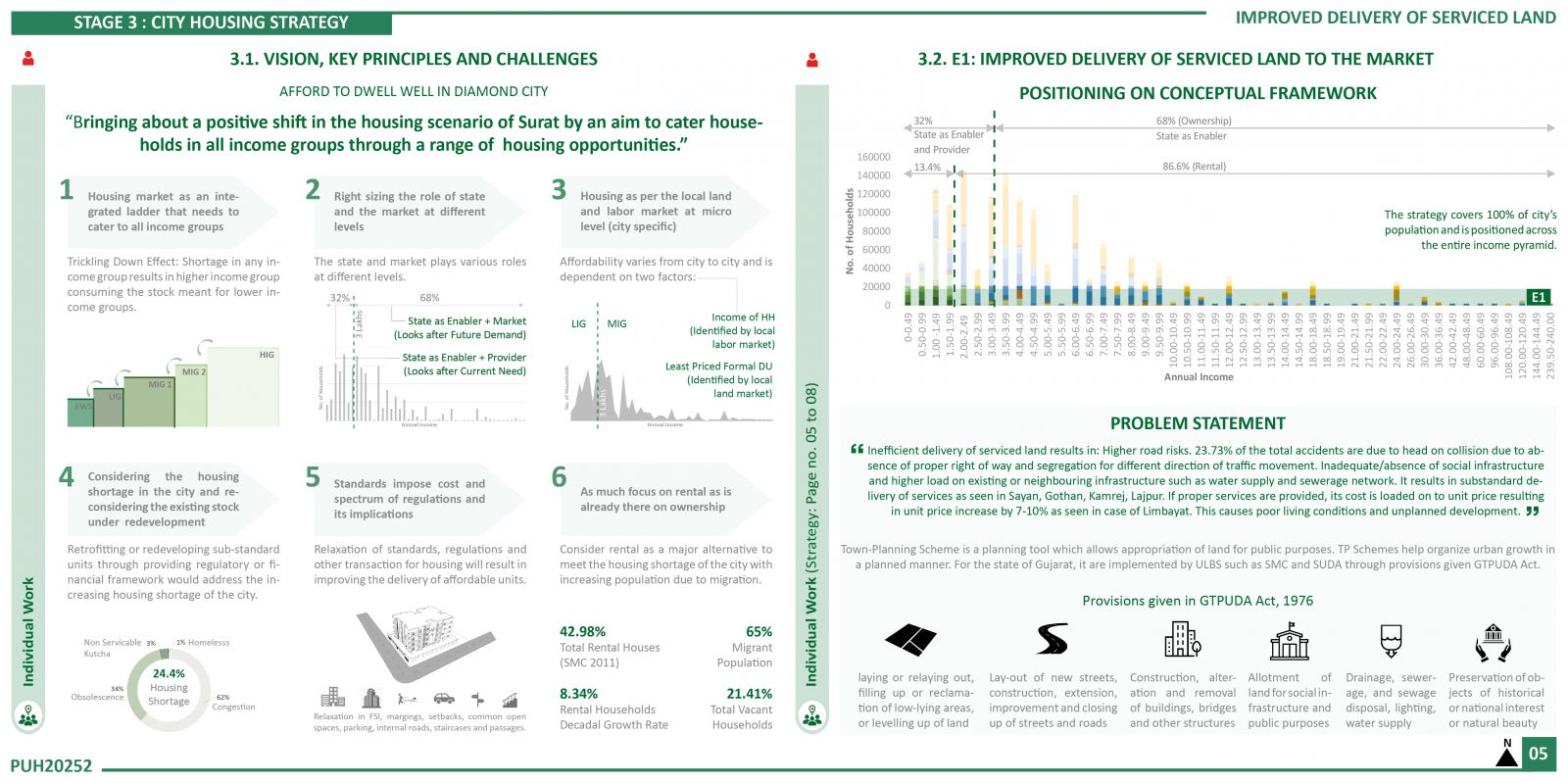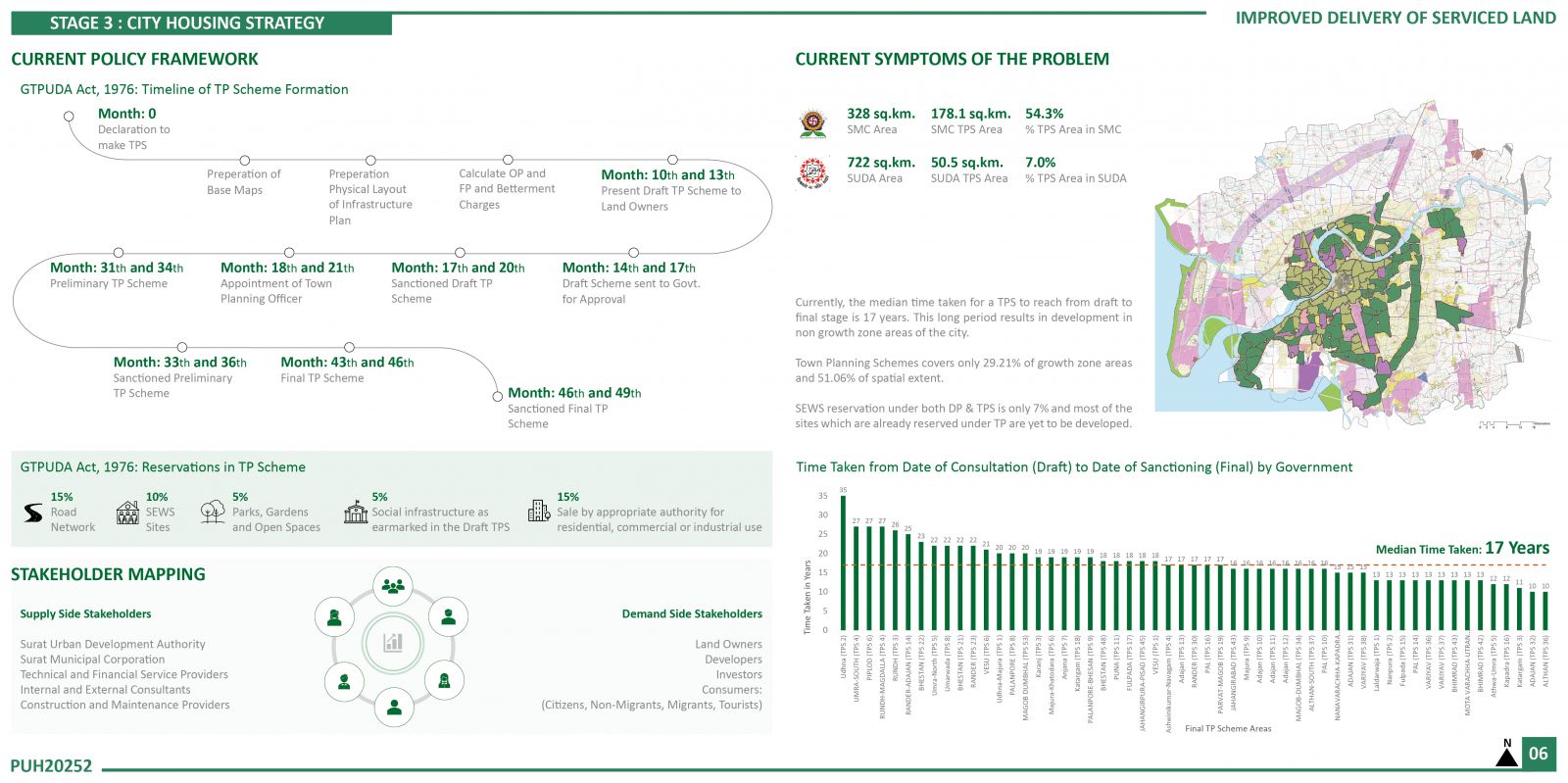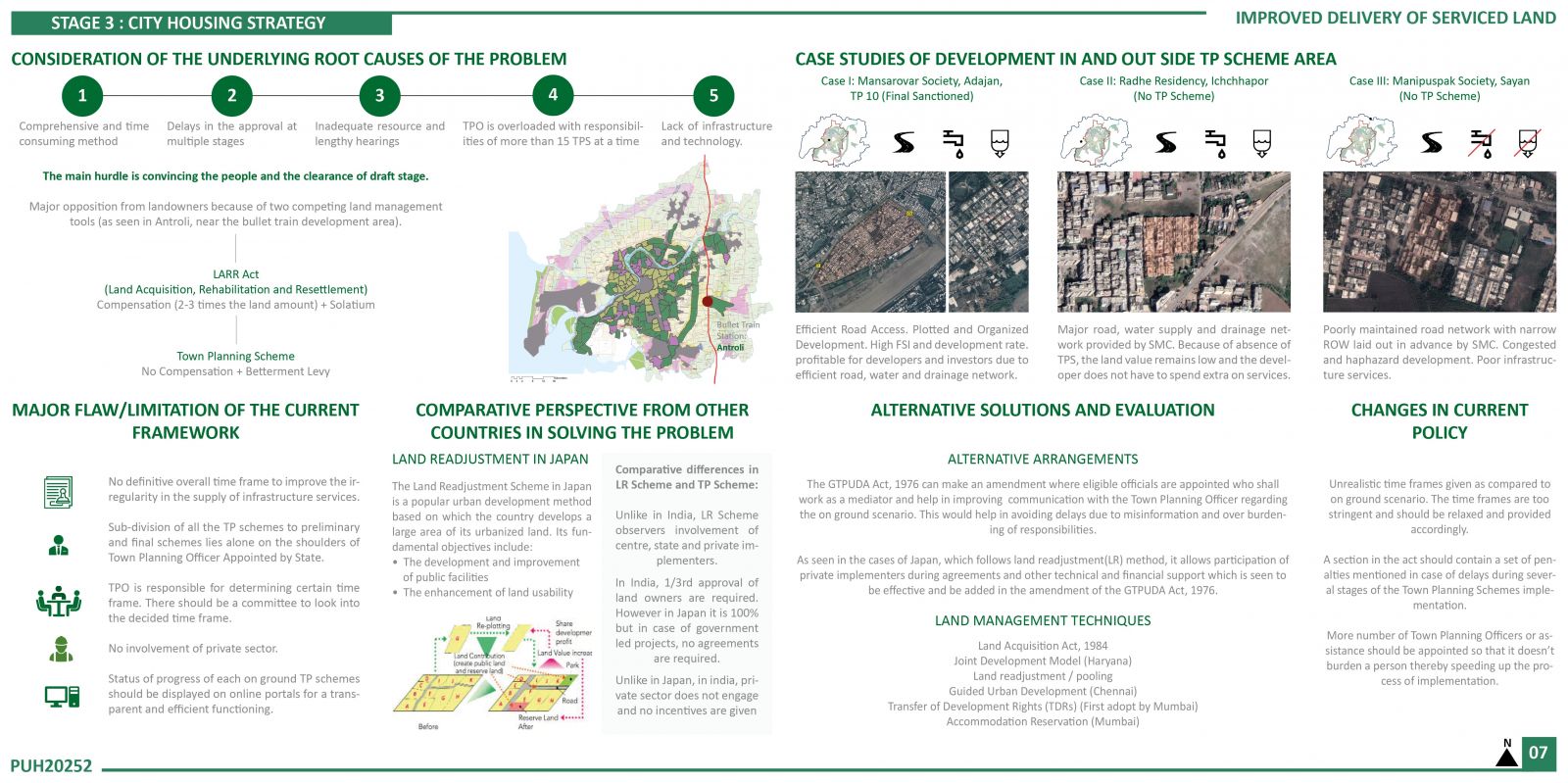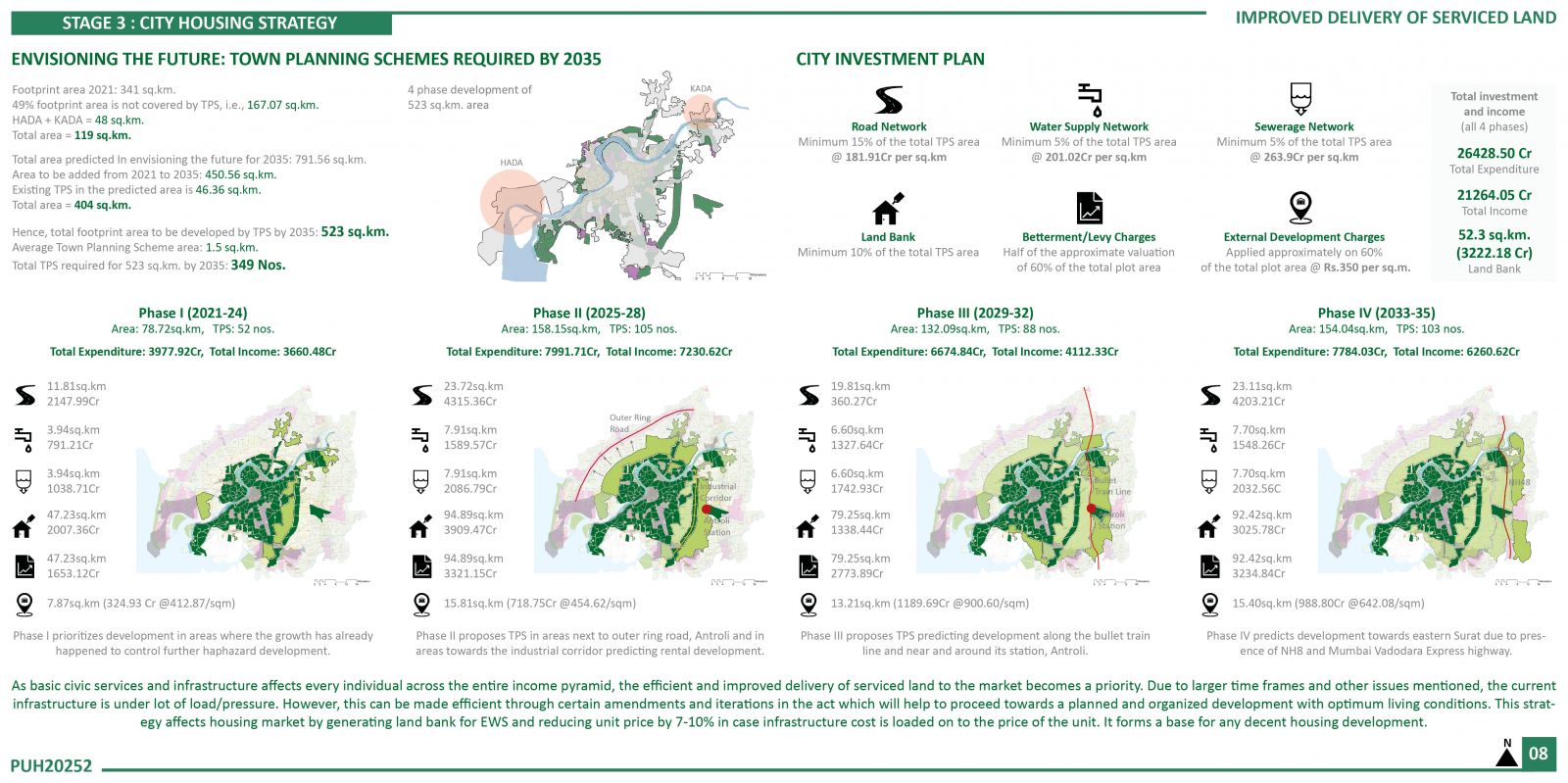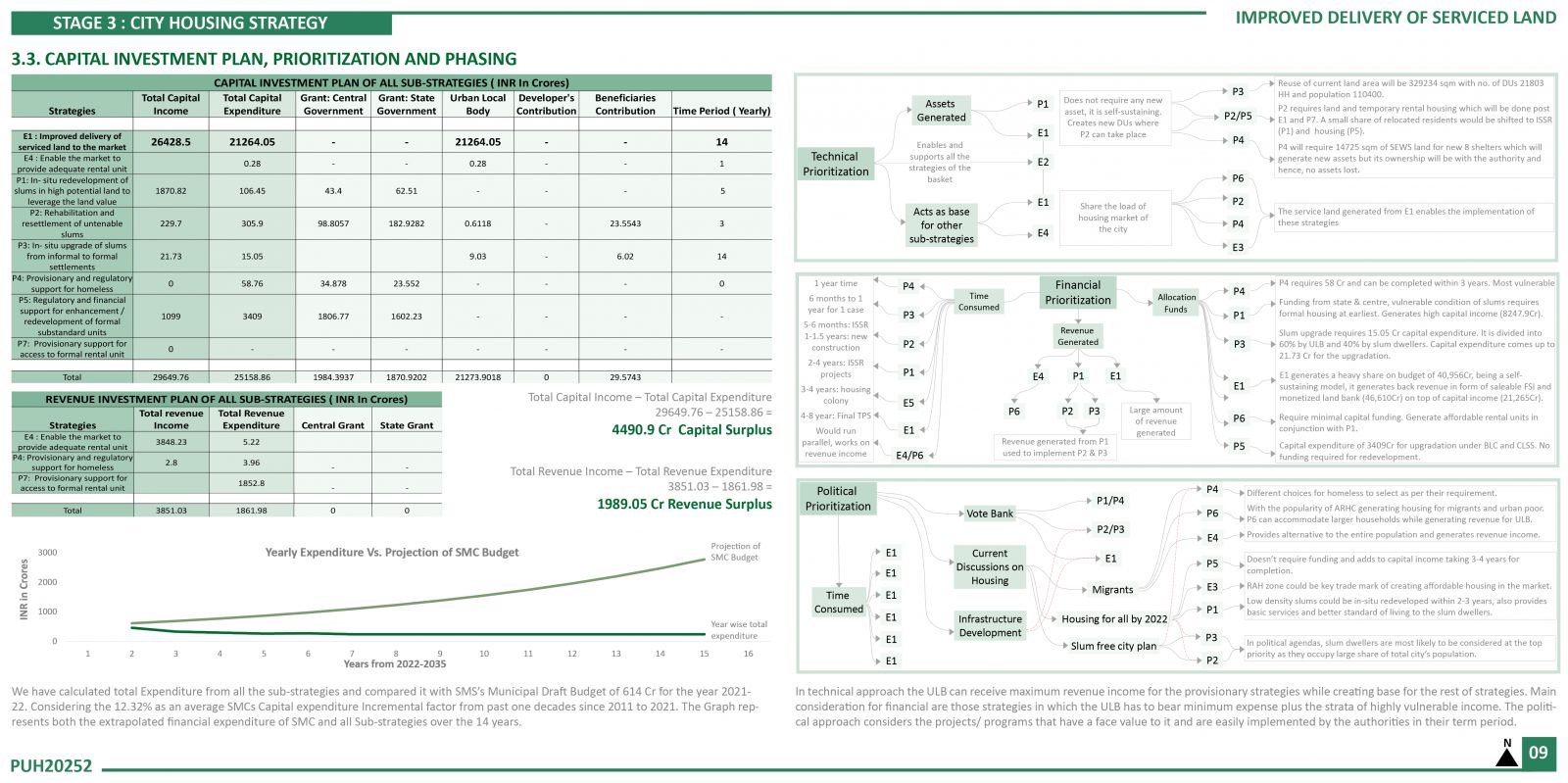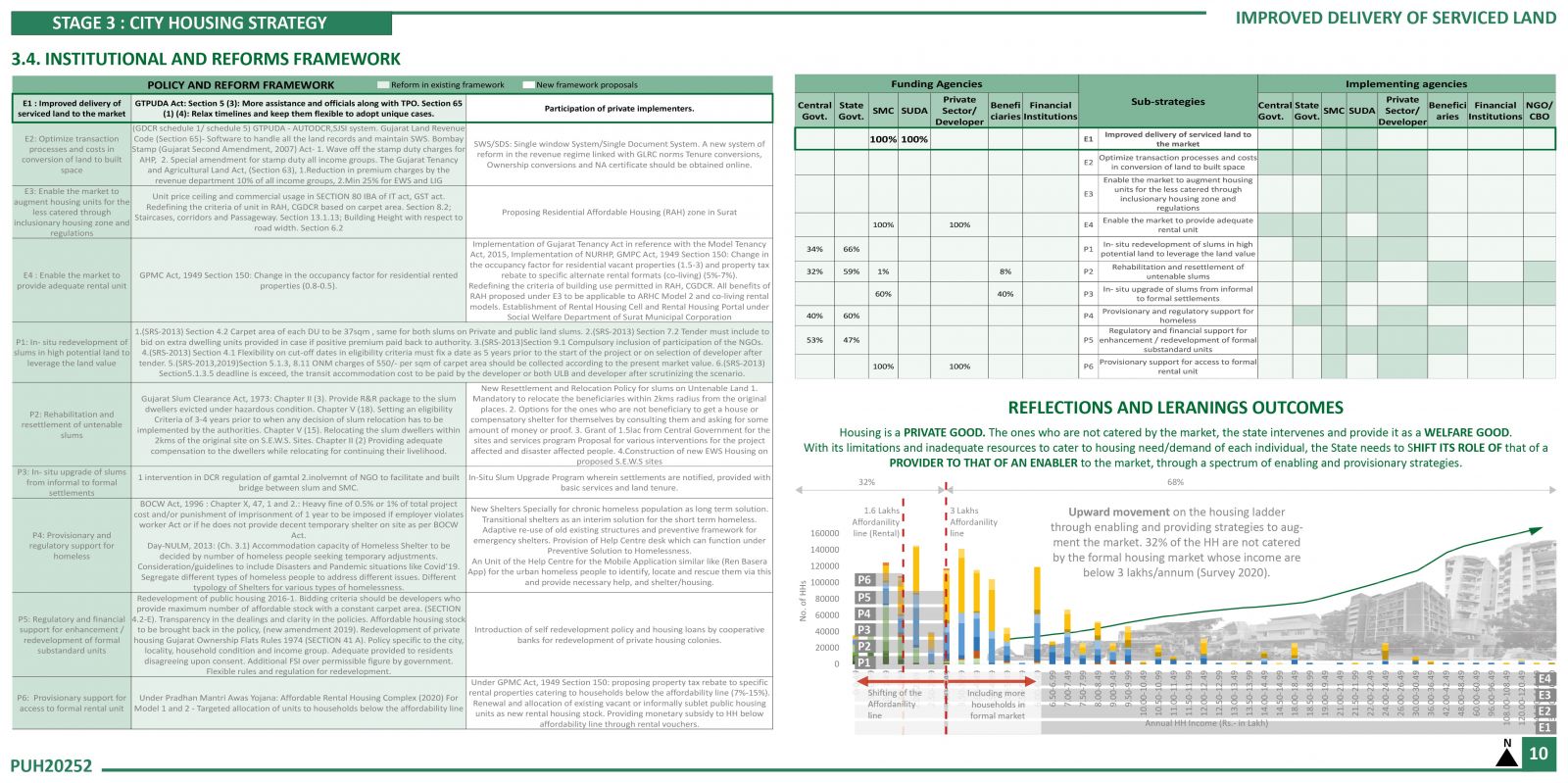Your browser is out-of-date!
For a richer surfing experience on our website, please update your browser. Update my browser now!
For a richer surfing experience on our website, please update your browser. Update my browser now!
The studio aims at improving access of affordable and decent housing in all income groups through various sub-strategies. To enhance the on-ground understanding of Surat, we collected and analyzed primary data through various surveys and interviews. Along with on-site leanings we worked rigorously on collecting data through various secondary sources. We studied demographic, spatial and economic trends of the city for past 4 decades through census and google earth imagery. This was used as a base to project and envision various growth scenarios in the year 2035 to help us formulate a set of enabling and provisionary sub-strategies in a much more effective and efficient manner. The studio then concludes with city investment plan and technical, financial and political phasing.
This portfolio focuses on the first enabling sub strategy, which is "Improved Delivery of Serviced Land to the Market". As basic civic services and infrastructure affects every individual across the entire income group, the efficient and improved delivery of serviced land to the market becomes a priority. The current infrastructure is under lot of load/pressure. The portfolio covers various ways in which load can we reduced and organized planning can be achieved for optimum living conditions.
